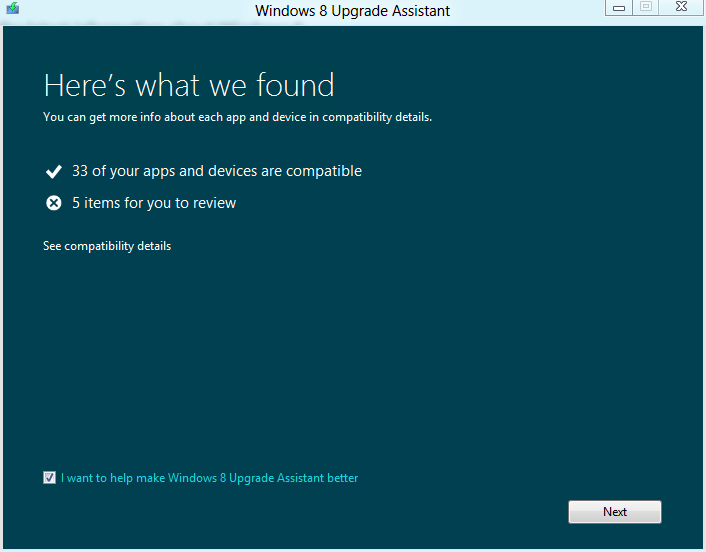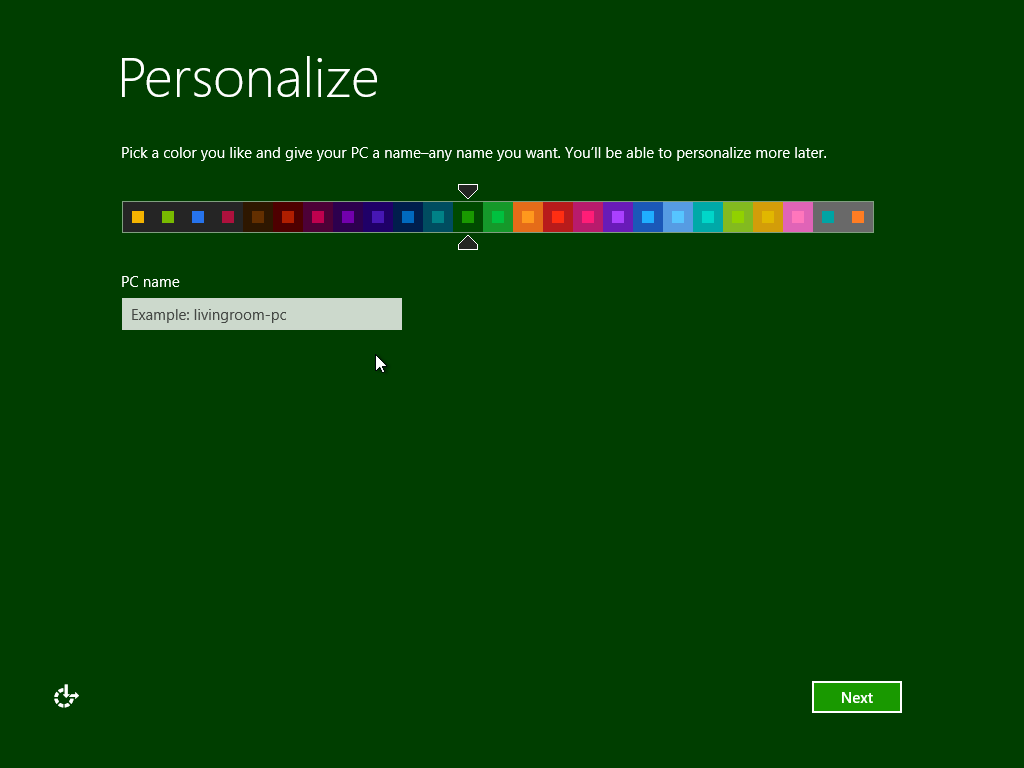| Vi bestræber os på at have vores hjemmeside på så mange sprog som muligt, dog er siden lige nu maskinoversat ved hjælp af Google Translate. | Luk |
-
-
produkter
-
resurser
-
support
-
firma
-
-
Startside
-
Ressourcer
- Blog
- Opgradering fra Windows 7 til Windows 8Upgrading from Windows 7 to Windows 8
Opgradering fra Windows 7 til Windows 8Upgrading from Windows 7 to Windows 8
Ved Steve Horton Maj 13, 2013upgrade, Windows 7, windows 8No CommentsDu indtaster den nye verden af moderne computing, når du opgraderer fra Windows 7 til Windows 8, og det er en ret nem proces. Erfaringerne med problemfri integration af dokumenter og programmer fra Windows 7 til Windows 8 bliver let tilgængelige på mindre end en times installationstid. Microsoft tilbyder enkle, tilgængelige online-anvisninger på Windows 8-installationsprocessen til Windows 7-computere.
Opgraderingskrav
Det er vigtigt, at din computer skal have minimumskravene, herunder en 1 GHz-processor, mindst 2 GB RAM, en 16 GB harddisk og et grafikkort, der understøtter Microsoft DirectX 9. Hvis du vil bruge multitouch-funktionerne, skal du sørge for, at skærmen kan støtte dem. Din skærmopløsning skal leje 1366 x 768 pixels for at understøtte funktionen snap apps.
I de fleste tilfælde overgang eller opgradering fra Windows kan du holde dine personlige filer, programmer og Windows-indstillinger. Dette gælder, om du har Windows 7 Pro Home Basic, Premium, Professional eller Ultimate udgaver; eller Windows 7 Professional, Enterprise eller Pro-udgaver.
Fire trin til opgradering
Microsoft giver bekvemt fire trin til opgradering til Windows 8. Deres Windows 8 Upgrade Assistant downloades til din pc og tjekker gennem dens komponenter for at afgøre, om din computer er klar til Windows 8. Når du har købt og downloadet Windows 8-pakken (almindelig eller Pro), er næste trin at installere opgraderingen. Endelig opsætter du Windows 8 med dine personlige indstillinger.

Opgraderingsassistenten afgør, om din pc kan køre Windows 8.Windows 8 Upgrade Assistant dukker op og giver dig mulighed for at klikke på, hvad du vil beholde: Windows-indstillinger, personlige filer og apps; bare personlige filer, eller intet.
Når du har besluttet og købt pakken, bestemmer du, om du ønsker øjeblikkelig eller senere installation. Med sidstnævnte kan du downloade Windows 8-pakken til et USB-flashdrev eller brænde det til en tom dvd.
Hvis du gør en øjeblikkelig installation, skifter du Windows 7 til Windows 8 på din pc, er processen en no-brainer; lad downloaden gøre sit arbejde. Din computer vil komme til og fra flere gange, og du vil snart finde dig selv i det sidste trin med vinduet Tilpas til visning. Om et par minutter vil du flytte fra Windows 7 til Windows 8.
Tilpas din opgradering
Nedenstående vindue bevæger dig til processen med at vælge farver til baggrunde og vælge et kontobillede. Du kan bruge tid her eller gå til Expressindstillingerne og tilpasse din platform på et andet tidspunkt. Bestem, om du vil have en Microsoft-konto. Ved at oprette en med din personlige e-mail, vil du være i stand til at synkronisere dine sociale netværkssider og fotodeling. Det er en god ide at have en Microsoft-konto, der har adgang til dine filer via desktop-, tablet-, bærbare og smartphone-platforme, der også har Windows 8.

Tilpas din Windows 8-installation med farver.Rengør installationen
En ren installation indebærer, at du vil have Windows 8 installeret på et tomt drev eller en, som du ikke har noget imod at slette, eller på en anden partition af dit drev til en dual-boot-aftale. På nogen måde bruger du DVD-disken eller USB-flashdrevet, som har den downloadede Windows 8-installationspakke til at starte computeren op og udføre dens magi. Placer dvd’en eller flashdrevet i computeren, mens den er tændt. Sluk for computeren. Tænd det igen for at lade det starte op i installationsprocessen. Du skal muligvis gå ind i computerens BIOS-indstillinger for at ændre rækkefølgen af bootprocessen, så den genkender dvd-disken eller USB-drevet over harddisken. Derfra skal du bare følge vejledningen.
Was this post helpful?YesNoGratis Driver Opdateringer
Opdater dine drivere på mindre end 2 minutter for at nyde bedre PC ydeevne - Gratis.
Gratis Driver Opdateringer
Opdater dine drivere på mindre end 2 minutter for at nyde bedre
PC ydeevne - Gratis.
Fandt du ikke dit svar?Stil et spørgsmål til vores fællesskab af eksperter fra hele verden og få svar på ingen tid overhovedet.most relevant nylige artikler Firma| Partnere| EULA| Juridisk bemærkning| Sælg/del ikke mine oplysninger| Administrer mine cookiesCopyright © 2026 Corel Corporation. Alle rettigheder forbeholdt Brugsbetingelser | Privatliv | CookiesFastgør det på Pinterest
-